|
I just wrapped the podcast on why fat men are a feminist issue with Everyday Feminism's Sandra Kim. At the end of the interview I began discussing ways that we could culturally and individually combat the fat shaming that men experience. And I found myself (kind of totally unexpectedly) discussing attraction.
Attraction, in so many ways, feels like the final frontier of my own feminism. I think I became a sexuality scholar because I felt that sexuality holds so many of our greatest secrets. Desire and attraction are like a map or a document that we can use to excavate our culture and ourselves. Interrogating my own attractions and desires was work I had avoided for a very, very long time (and, hell, I'll be honest, I've just started doing it and am a total newbie). It was convenient to avoid the ways that my politics and my attractions didn't add up. I - like many - had been taught that thin, fit bodies are superior. I didn't question that belief for a long time, but once I did begin to question it I found that my investment stopped at exactly the point of attraction. I was willing to begin resisting cultural narratives about my body, but when it came to the bodies of my sexual/romantic partners I didn't feel so resistant. As I became fat positive, I began to really think about the words that came out of my mouth, the media I consumed, the clothes I wore, the beliefs I held about myself. I didn't really question the size of my partners, though. I didn't want to think about what their size indicated about my deepdeepdeep beliefs about my size, my rolls, my jiggle. Time after time I was dating thin and/or fit men. It felt almost like it was "just happening." I convinced myself that it was "just happening." I told myself that my coincidentally thin partners just happened to be more aggressive than others, that the cost of living in San Francisco created a cadre of uniformly thin men because thinness was part of that "upwardly mobile aesthetic," that they just happened to show up at my doorstep through some miracle of alchemy. I had not chosen them; they had chosen me. And I was simply being polite and saying yes. Yes, coincidentally thin guy who's probably fetishizing me right now, yes, I will go have drinks with you because you asked and I am polite and it is a total coincidence that your body looks like an exact replica of the last 3 dudes I had drinks with obviously. It was a practice in swapping dehumanizations. All the while I managed to pretend that this wasn't part of an exercise in self-loathing, a manifestation of all the unresolved feelings I couldn't entirely reconcile, wasn't ready to address. I gave myself every imaginable excuse, but the truth was always there. My singular attraction to thin men was my way of dealing with the enormously stifling and damaging fatphobia I had learned and internalized. And every time I engaged in that singular attraction I was re-opening and confirming that wound, keeping it fresh, punishing and disciplining myself through the momentary pleasures of false passing. In the moments those men were holding me or loving me, I was good enough because their thinness - their ability to be normal - was a stand-in for the culture's approval, was an atonement for my failure. Back to the podcast (because, yeah, I still haven't worked all this shit out, ghurl!). I talked about how important it was for me to date fat men, but I think I meant that I like that I've begun to find all kinds of bodies super foxy. It doesn't feel like a forced practice. It feels like something that's just happening along the way to my own healing and my own sense of humanity and beauty. The podcast, which will be live on Saturday, November 9, delves more deeply into my recent post on the ways that fat men are portrayed online. Last Saturday me and BFF, Jessica, went straight from breakfast burritos at The Grind to Intersection for the Arts for a Kearny Street Workshop hosted modeling and runway workshop in anticipation of their sure-to-be-bomb fashion show on May 31, Celebrate Your Body (use code "fashionforward" for limited time to get $2 off price of admission), where you will see me, duh, modeling & strutting. Was this the first time I've experienced the harrowing challenge that is le modeling? No. But Saturday was a crash course in working the runway. Stephanie of San Francisco's 31Rax was presiding as I and about 40 others (in a dazzling array of representation across the size, gender, race, and age spectrum) werq'd it to Rihanna et al. Here are the 3 secrets that I learned about working the runway (and life): 1. Slow down - way down. Find the beat to the song that's blasting and really feel it in your hips and your feet. My burlesque training really came in handy on this one. 2. Make every moment photograph worthy (rule to live by!). 3. Make eye contact. As you walk down the runway, as you pose. Check out Kearny Street Workshop's upcoming show, Celebrate Your Body, on May 31 in San Francisco. Save $2 off tickets with secret code "fashionforward" now.
Keywords: fat modeling, fat fashion, fatshion, plus size fashion I'm deep in the preparation work for this Saturday's NAAFA-sponsored free teleseminar "Fat & Sexy: 5 Things You Always Wanted to Know about Sex but Were Afraid to Ask." In thinking about the most important lessons I've learned over the years - as sexuality expert and as a woman who has an avid dating/relationship life - there's one lesson that took me a little longer than others to learn. Because it's not a tip or a trick; it's a state of mind. One of the secrets I'll be discussing the in-and-outs of this Saturday is this one:
Secret #3: Cuteness is a state of mind Otherwise put: become your #1 fantasy. As a fat woman I remember entire stretches of time where I was no where near the scene of my fantasy landscape. I had internalized the culture message that my body wasn't sexy so deeply that I was unable to even imagine myself - as my actual self, not a future "ideal" - during fantasies. I learned a lot of amazing lessons in body love from friends and books and then came the part where I had to practice. Ok, so I told you this secret wasn't about tips and tricks, but here's one practice that involves tricking your brain a little bit. When you're getting "busy" with yourself, try to imagine yourself as you are now doing something that you find sexy. If this is your first time doing this, have patience with yourself. You might be dealing with resistance to the centering of your body in your fantasy. That's ok! Touch yourself erotically without the end goal necessarily being orgasm. Do this once a day for 2 weeks. This practice beings to suggest to your brain that this is a new habit that it likes, and it will begin to remap your neuroanatomy. Want to diversify the fantasies that can bring you to climax? I have a secret for you, but you'll have to wait til Saturday... Sign up for Virgie's free NAAFA-sponsored teleseminar, "Fat & Sexy: 5 Things You Always Wanted to Know about Sex but Were Afraid to Ask" this Saturday at 4pm (Pacific). Keywords: NAAFA, fat sex, sex positive, sexuality Not many people know this but when I originally pitched Hot & Heavy the book was going to be all about fat girl sex... Sexuality has always felt like my political nest, the place from which I stretched my baby feminist wings. I am drawn to talking about sex openly and honestly because I experience it as a deeply political and pleasurable act. Dirty stories have brought people together for, well, a really, really long ass time. I never feel closer to people than when I'm telling them about that one time I queefed in my boyfriend's face (seriously, that was my opener when we would hang out with new couples) or they're telling me about that time they found glitter in their pussy, like, 8 days after that one orgy they went to.
Interestingly, whenever I talk to people who haven't read Hot & Heavy: Fierce Fat Girls on Life, Love and Fashion they presume that the book is a full-on salacious read about hot times at Fat Ghurl High. I'm not sure if it's because of the cover (featuring duhliciously sexy April Flores), because I'm a pervert (or maybe they are) or because the title is a reinterpretation of a sexy turn of phrase. Just to set the record straight: as much as I love the idea of a book all about the secret sex lives of fatties, H&H isn't actually all about sex. Though, I will give you a little secret: when I originally pitched the book to Seal Press, it was. My idea was to interview a bunch of fat girls about their sex lives and share all the juicy details thus blowing the mind of all society, kick-starting an orgiastic fatty revolution. The senior editor at the time, the too-fab-for-words Brooke Warner, had a vision for a book that delved deeper into other arenas of fat girl life. It turned out that I LOVED that idea! We collaboratively came up with the idea for what is now Hot & Heavy. I heard from Good Vibrations a few months ago and they said they were thinking about buying the book. They were one of a few local bookstores who really supported me during the sale of my first book (about boobies, in case you didn't know), and I was stoked that H&H was a fit for them. I was also excited because I immediately saw the opportunity to focus on the naughtier parts of the book in a reading... which is happening this THURSDAY at 1620 Polk Street! Yes, March 14 from 6:30-7:30 catch me and Miss Kitty Stryker reading from the book's more adult chapters. Kitty's chapter, "Fat Sex Works!", is an incredible look into her experience as a fat sex worker in the US and abroad. I will be reading choice morsels from chapters "2Fat2Fuck" by Rachel Kacenjar, "Journeying Into a Fat, Fleshy Vulva" by Shawna Peters and "The Fat Queen of Speed Dating" by Golda Poretsky. And there might be a little peak into my chapter, "Pecan Pie, Sex & Other Revolutionary Things." There will be truffles, there will be naughtiness, there will be cleavage (personal guarantee on mine at least; feel free to bring yours). Hope to see local folks there there! And if you're not around enjoy a couple chapters and raise a glass. We'll be there with you in perv spirit. xo, Virgie This blog was edited from the original version on 9/28/12, 4:15pm.
NB: I got some fantastic feedback from two people related to this blog, and I want to thank them for taking the time to write and also for their ideas about how to make this blog/my ideas engage even more critically with systems of oppression! As a writer I find the process of feedback so important, and I don't always get a second pair of eyes before publishing. Some minor edits have been made to the original post, but the premise/thesis of this piece has not changed. Lady Gaga’s recent response to being called “meaty” is one in a relatively long line of (indisputably) thin women spouting the rhetoric of body revolution while being deeply involved in the machine that churns out impossibly arbitrary beauty standards. Yes, Gaga, I give you props for putting yourself and your body out there because I realize it likely felt vulnerable. But really? It’s taken you this long to realize that these standards exist and that they affect you too? Women all over the United States affirm and reaffirm body standards through a kind of confessional process, referred to in popular culture and by some fat/gender studies scholars as "fat talk." A confession might begin with something like "I hate my thighs!," followed by a reciprocal outpouring/confession meant to bond us women in our mutual, dogged pursuit of the "perfect" body. In the book Fat Talk, MiMi Nichter notes: "The statement 'I'm so fat' is actually much more than an observation about how a girl looks or feels. It is a call for support from her peers." Another emanation of fat talk is a meme with which we are all familiar: “You look like you’ve gained a little weight,” often followed quickly by “You look great no matter what!” This confusing criticism-comfort model is part of this long-time feminine pastime. Women engage in this kind of conversation publicly and privately: What did you eat? How much fat does that have? Did you lose weight?! It’s what scholars have deemed a “uniquely feminine” conversation tendency. Sometimes we’re expected to offer tough love and other times we know that a dose of unconditional adulation is what’s called for. The outpouring of earnest replies from fans fits perfectly with this conversation pattern. The thin Lady Gaga has been called fat and engages with this by launching the "Body Revolution" campaign. In so doing she begins the chain of reactions women have been taught, from our baby days, to enact. Her fans comfort her. Her fans resonate with her and the campaign, but will this campaign be the fix to our feminine body woes - or even the start of a new conversation? My bet’s on no. It doesn’t engage with women and our bodies in a fundamentally different way. The conversation – and the way it’s playing out – follows all the trappings of fat talk and makes this body revolution a lot more like high school mirror talk redux. Because “fat talk” isn’t about change. It’s about reaffirming body policing. It’s about keeping the conversation fundamentally about our focus on the female body and not on liberation ― and certainly not on revolution. This Body Revolution campaign is not a new idea. Upper class women have found the concept of system overhaul titillating for centuries. Furthermore, the campaign's phraseology borrows from fat positive ideology that's been around for several decades. Lady Gaga’s show of near-nudity becomes an invitation to commiserate and comfort; remind her that she does, in fact, have an “enviably” thin body. We become her best friends in that moment, engaging in the ritual that feels familiar. Her exposed body becomes a thing that we are supposed to pity and envy. We play out the roles; we derive pleasure from playing out the roles, and once everyone is suitably fulfilled and reassured we go back to counting calories. I’m a firm believer in the politics of size. Hell, I’m a fat activist. And if we were at a different point in the history of fat, women, feminism, whatever, I think it would be obvious that the the Body Revolution campaign is a problematic attempt. But we’re not at a different point. We’re still at this one: where fat is considered an act of personal failure, where women bear the moral brunt for body “aberrance,” where women are mostly just bodies to be approved and gawked at or loved or loathed depending on the camera angle or the Instagramonomics, and where we all live in fear of that one little word: F.A.T. Gaga’s campaign is not a method to unravel an oppressive, obsessive system of body rules that has us reeling. It’s the same old ethics misleadingly packaged in body-positive language. Alicia and Kori at the September 1 Picnic & Swap at Dolores Park in San Francisco. Outfits styled from clothing brought to the swap.
Fatty clothing swaps are revolutionary. They are revolutionary because they subvert the expectation that we not gather - because when fat-bodied people gather we are more visible. They are revolutionary because they challenge capitalism. They are places where we pool the resources we have and share them. And then we celebrate that sharing. They are revolutionary because they undermine traditional gendered ways of relating. The culture of clothing swaps encourages the exchange of "girl, you werked that!" and "that looks so good on you!" They are revolutionary because they refuse to accept that we, as fatties, ought to wear only muted colors in conservative cuts. Fatty clothing swaps take the frownies upside downies and take fashions' lemons and turn them into lemonade spritzers with a cran twist. That's why I love fatty clothing swaps. That's why if you've been thinking of hosting one you really ought to! Last weekend Kori Bias of Buxom Vintage and I decided to coordinate and create a plus-size clothing swap + picnic at the very tail-end of summer at Dolores Park in San Francisco. I would say I'm a bit of a veteran of the swap, having been to a little under ten of them myself. There's often food (hummus, wine, and cupcakes seem to be swap favs). There's always chisme. And there's plenty of love. But I had never really organized one. So, when Kori messaged me about Sep 1, I was all over it. I thought I'd make a quick how-to guide for the newbies who are considering doing it, but aren't sure about the ins'n'outs. Prep Work 1. Your Vision Now, the vision portion is where most people begin and end (when it comes to swaps, careers, relationships, adventurous outfit choices). They get scared (what if no one comes?!). They get overwhelmed (what if 80 people show up?). They get mired in unnecessarily high expectations (I need boys in gold lame hot pants passing around smoked salmon mousse and capers on mini-toast or I'll diiiiiiiie! Trust me: I've so been there). That's what I'm here for: to remind you that you can make this swap happen! When you imagine the swap you want to have, is it mostly friends or mostly people you don't know well yet? Is it at your house or at a park? Is there food? Once you figure out what your swap looks like, figure out what you need: mirrors? somewhere people can change outfits (some people will be more likely to want to change in private than others; so a place like a bathroom can be great, but the most recent swap I did was at a park, obviously, and people didn't mind trying on clothes over their outfits or their leggings/chemises)? ice? food? If the list starts getting long, ask yourself if you can live with doing a little less. The answer is almost always: Yes! Do not abort the mission! Virgie's Vision Swap Rule: 99% of what you need for the swap you must already own or have access to. The most low-maintenance/novice-friendly swap might involve your/a friend's place, some empty floor space, and the Dirty Dancing soundtrack. I highly recommend for the first-time swap organizer, that you commit to a low-maintenance swap, plan to offer 1 or 2 simple snacks, with an expected turnout of 5-10 people. 2. The Date & The Time Figure out when you want to do it and set the date and time. Whether you feel you need 6 months or 6 days, figure out what works for you (the organizer/s) and those who may be attending. If most of the people you're inviting are long-term planners, you may need to give them a 1-2 months heads-up. If they're last-minute people, you may need only a couple weeks. Weekends are often the best, but people who want to show up will show up on a weekday evening. I don't recommend early mornings, but any time between 11am and 9pm are prime swapping times. Virgie's Date Rule: I don't recommend giving less than two weeks or more than 2 months notice for a swap. Virgie's Time Rule: Always expect that most people will show up an hour late. 3. The Venue My #1 choice for a novice swapper is your place or a friend's place. Choose a venue that works for you, your vision and that's as easy as possible. You can hold a swap outdoors in a park, for example, if you live in a place with clement weather, but make sure to advise guests (in the invite) to wear things like leggings and tank tops under their clothes so they can easily try things on while getting close to a true-fit and not having to get nekkid in public. Virgie's Venue Rule: Steer clear of venues you have to pay for or that require strict reservation times. 4. Invites The invite is where you share the details from steps 1-3. Excellent things to include are: (1) time (start time and end time), (2) location, (3) whether there's going to be food and how much of it/what kind you want your guests to bring, (4) how private or public the venue is (back to Step #3), (5) if you definitely do NOT want certain items (like shoes, which are heavy and don't move as easily or quickly as clothing, but that can be amazing if you or your guests love shoes), (6) what the accessibility sitch at your venue is (could your venue accommodate someone with a disability or an 80 pound bag of clothes? If you live in a 5th floor walk-up/have any stairs, for example, this is important info for your guests and you can figure out how to make things work before the day of). Make a Facebook page for the event, send out emails, write a blog or a tumblr post and feel free to ask friends to promote it mindfully (you don't want Mike from the bar showing up... unless you do want Mike from the bar showing up) on their page/feed if you want to meet new friends. Virgie's Invites Rule: If you're inviting a lot of people who aren't close friends, however many people RSVP, divide that by 2 and then multiply that number by 0.7 and you'll roughly have your number of attendees. Do not panic if the number is low! The Day Of 5. Keep it Simple Do not under any circumstances panic! If you said you were providing snacks, then prep them. If you have extra mirrors to bring out do that. Most of the fatties I know aren't into sitting on the floor (I know I'm not), so if you have some extra seating or pillows to sit on those are great. Make sure you have some garbage bags or grocery bags for the leftovers post-swap. Put out your swap offering if you want. Turn on some music. Get a glass of wine. 6. So everyone is an hour late. Girl, don't stress. We already knew this was going to happen and it is absolutely no reflection on you, how much people love you, or how they feel about the swap. I have been to swaps where a bunch of serious swappers (such as: me) show up as early as possible to get first dibs. At our swap, Kori didn't want any actual swapping to happen until 1 (the event started at 11) so that folks could get a chance to settle in, talk and we could accommodate late-comers. Though I'd never seen it done before, I liked the outcome! You get to decide how that plays out. 7. Swap! As the hostess you get to decide how the swapping works, but mostly I've found that people organically gravitate to pieces that suit their style and there's enough to go around. If people don't take what you brought, then don't fret! If your guests are shy, get into that pile and start pulling pieces that might work for individual guests. Encourage people to try stuff on and give encouraging feedback. It's tres infectious. 8. Clean-up The etiquette around the leftovers seems to be that the host/ess and/or people who have a car take all or half the leftovers - once they're bagged up - to the local thrift store. 9. Bask in your Fabulosity You have officially joined the annals of hostess history. It occurred to me today that I walked blindly into fierceness, not knowing if I could pull it off, hoping it would all work out, aware that I had nothing to lose but “my precious chains.” I pieced together the bits of life’s lusciousness which I’d learned to hang onto: first for survival and then something far beyond that. I’ve been a fat girl for as long as I can remember. The fierceness came much later.
Back to “my precious chains.” The allure of normativity – the chains - in all its forms – heterosexuality, monogamy, thinness – is incredibly potent and alluring. The promise is simple: you do this and you get that. But the payoff remains ever illusive. That’s because the payoff actualizes for very few and even those who are the seeming beneficiaries also suffer from the weight of its suffocating, merciless and incessant demands. To imagine that in a time when my greatest worry could be whether I want cilantro on my tacos, I look around me and see people living lives of prescriptiveness and not liberation. And I realize that it’s because, as Native scholar Andrea Smith once said, systems of oppression must seem like the only way; they must seem natural and inevitable or people would never participate in their own subjugation. I remember a time when I was very resistant to fat positivity. I didn’t understand it. Even though I was undeniably, by-every-western-measure fat, it felt like something that didn’t apply to me, something I wasn’t interested in. It made me feel unsure and belligerent and sometimes it made me blush. Even when I was organizing as a feminist, I was still sold on the bill of goods, my heart was still set on the prize of passing. I wanted so, so badly to pass! I didn’t have words for the longing that had grown inside of me. I wanted to pretend that this body wasn’t this body, and in disavowing this fat body I inadvertently sought to erase it and the other outlaw bodies that were like it. And then came fierceness. Me and fierceness went way back. Back to pre-school when I knew I was hot shit, when my belly was a fascinating orb and not the seat of my greatest shame. But I lost it. It was taken from me, forced out, presumed dead. But me and fierceness kept bumping into each other, and one day the glittery seed of fabulousness settled in again, began to lay down some roots, brought me back to life. Fierceness is fundamentally about resistance, about liberation, about protecting the strut, the light, the too-tight pencil skirt from all the people and ads and social forces that seek to force it out of you. Fierceness is queer. It is brown. It is revolutionary. My fat saved my life. This body, which at one time felt like it had betrayed and imprisoned me, was in fact the source of my greatest liberation. My fat reminds me that I was destined for things greater than passing. It took me through grad school, through feminism, relationships, love, through political and intellectual territory I could have only dreamed of. And, girl, I’m just getting started. |
Virgie Tovar
Virgie Tovar, MA is one of the nation's leading experts and lecturers on fat discrimination and body image. She is the founder of Babecamp (a 4 week online course focused on helping people break up with diet culture) and the editor of Hot & Heavy: Fierce Fat Girls on Life, Love and Fashion (Seal Press, 2012). She writes about the intersections of size, identity, sexuality and politics. See more updates on Facebook. Archives
April 2021
Categories
All
|

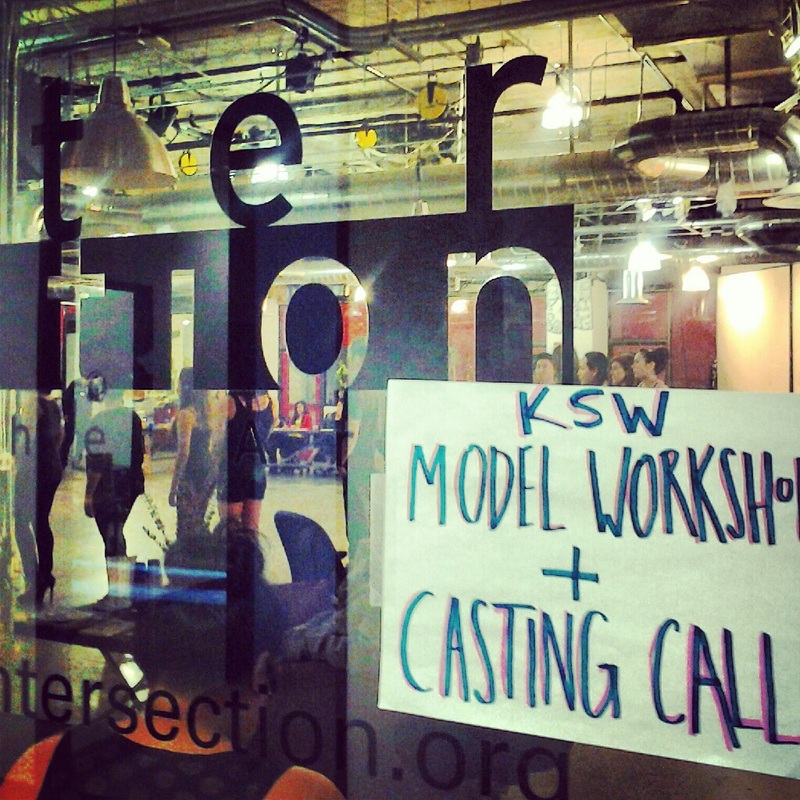
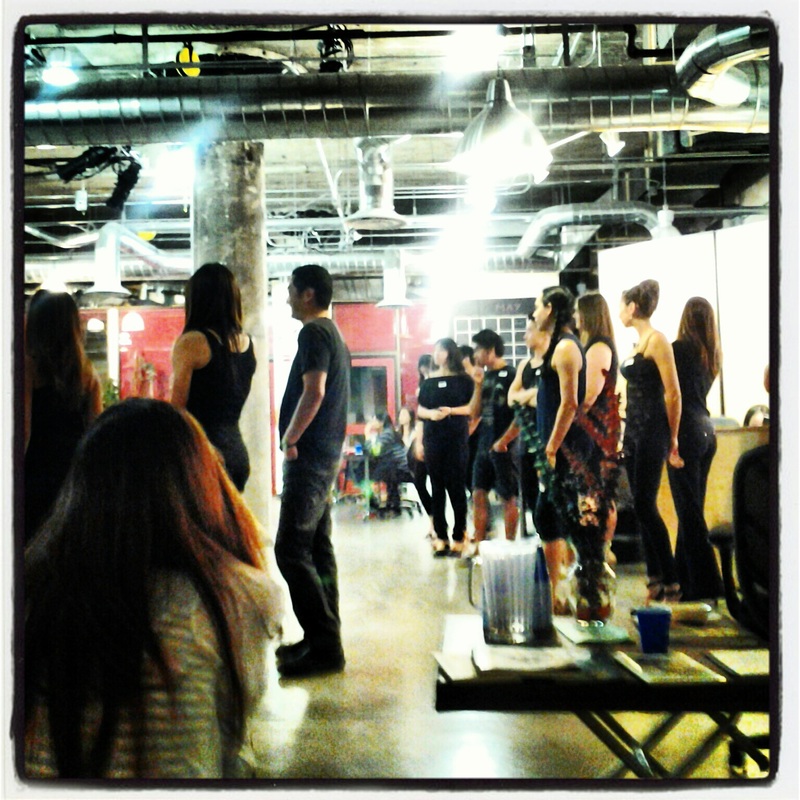

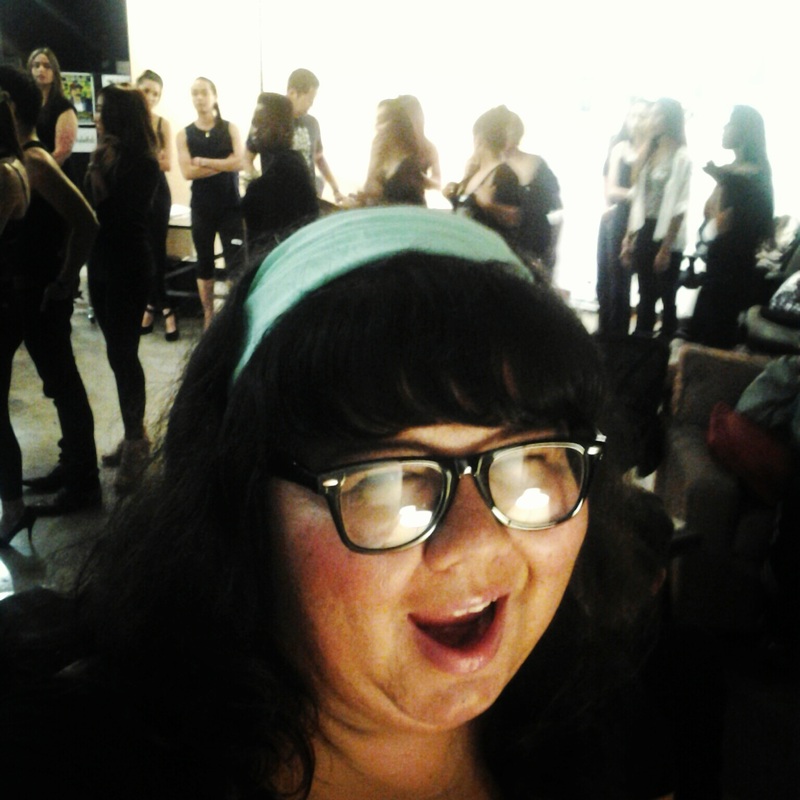
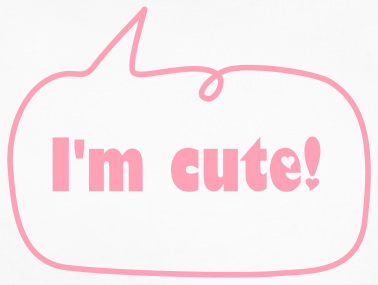

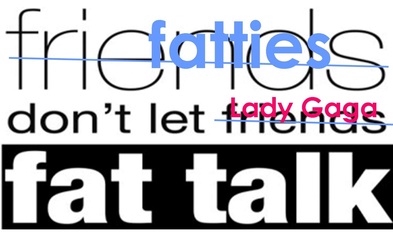






 RSS Feed
RSS Feed